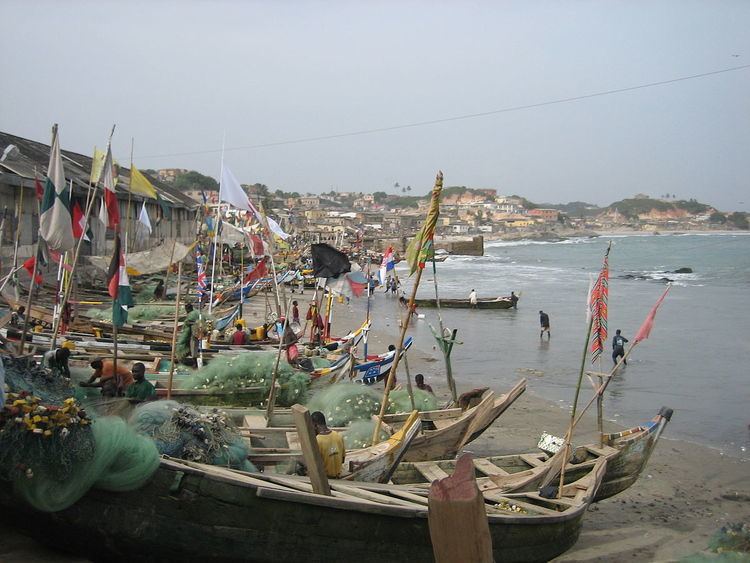 | ||
Fishing in Ghana increased considerably in the late 1960s, from 105,100 tons of marine fish caught in 1967 to 230,100 tons in 1971. In 1982 the yield was 234,100 tons, composed of 199,100 tons of marine varieties and 35,000 tons of freshwater fish from Lake Volta. The industry was hit by fuel shortages, inadequate storage facilities, and the general economic difficulties of the 1970s and the 1980s. Nevertheless, by 1988 the fish catch was 302,900 tons; by 1991 it amounted to 289,675 tons, down from more than 319,000 tons in 1990.
Map of Ghana
Large-scale poaching by foreign vessels has severely depleted fish stocks in Ghana's 200-nautical-mile (370 km) maritime Exclusive Economic Zone, causing major government concern. The most affected stocks are sea bottom-feeding fish. Tuna stocks reportedly remain unaffected. A 1992 Ministry of Food and Agriculture report recommended that the government accelerate mobilization of surveillance and enforcement units and step up regulation of trawler fleets. That same year, the government passed a fisheries law to curb overfishing and to help protect the marine environment. Fishermen were banned from catching specified shellfish, and all fishing vessel operators were required to obtain licenses. The law provided for a regulatory body—the Fisheries Monitoring, Control, Surveillance, and Enforcement Unit—as well as a fisheries advisory council. These organizations, however, both of which are underfunded and undermanned, are unlikely to stop illegal fishing activities anytime soon.
